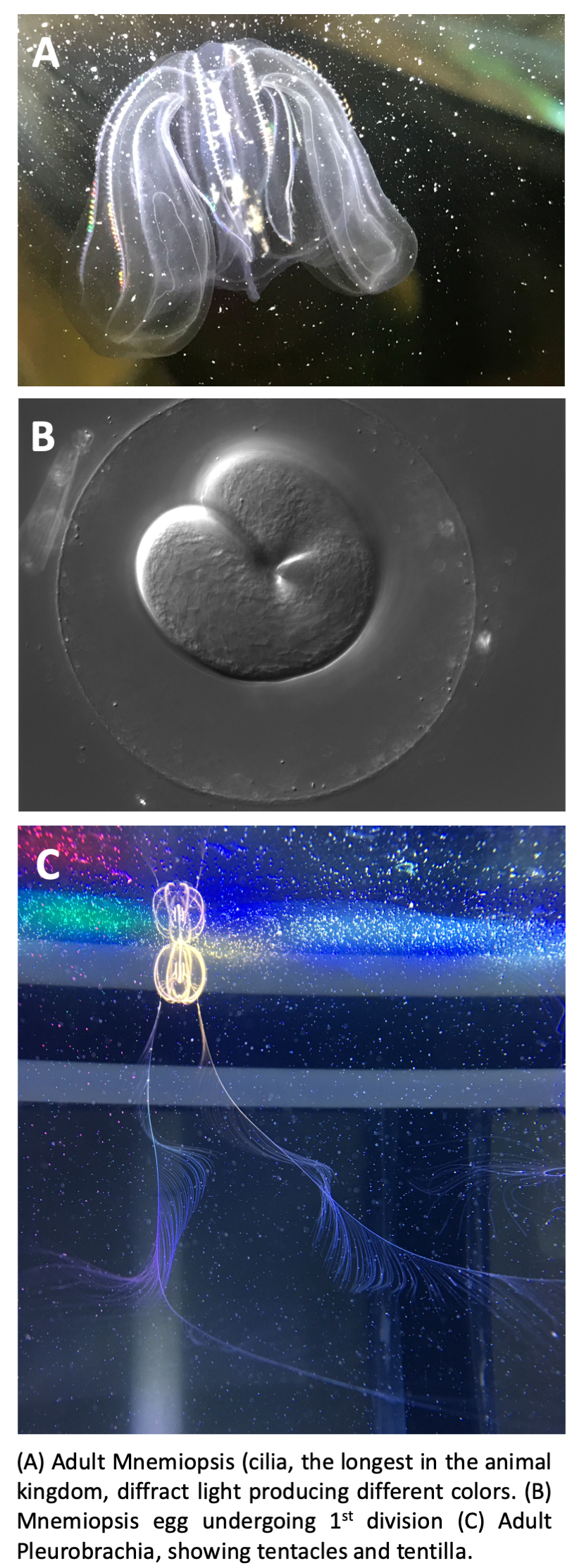 |
| Home | Research | Publications | Prospective Students | Teaching | Contact | Physics | Resources | Fun |
| Research Home
Current Projects Other Projects |
Molecular-Genetic Origins of Multicellularity 
The embryologic question of how a multicellular organism can arise from a single cell is intimately linked with the equally fundamental evolutionary question of how complex multicellular organisms arose from single-celled ancestors. The origin of multicellularity is a pivotal transition to complex life, as it was a necessary precursor to higher life forms containing complex organs including brains. However, it remains enigmatic as most of the molecular, genetic, and evolutionary mechanisms involved in the transition are only beginning to be unraveled.
Multicellularity emerges when cells cooperatively differentiate and organize spatially into an integrated organism in a process that is genetically encoded for successive generations to reliably reproduce from a single progenitor cell. Depending on the degree to which cellular aggregation, sustained cell-to-cell inter-connection, communication, and cooperation are integrated, the transition to multicellularity has occurred anywhere from about a dozen to about 40 independent times across the tree of life during evolutionary history. The repeated instances of this transition across distinct environments and various epochs, and on different phylogenetic backgrounds, suggests that multicellularity is a phenomenon that arose, and can ?arise, as a generic physicochemical response to various environmental pressures. In this sense then it is a natural consequence of evolution, and a universal aspect of life.
This is a new project that has become one of the primary focuses of our lab. We will investigate the function and evolution of genetic regulatory networks (GRNs) involved in the process of cell differentiation; we are currently using CRISPR/Cas9 genetic manipulation methods in model and non-model organisms to address this question.
One extant animal lineage that has emerged as a candidate for the sister group to the other metazoa are the Ctenophora, which diverged from other animal clades over 550 million years ago: Ctenophores or comb jellies are a phylum of gelatinous zooplankton found in all of the world’s oceans. We focus on a representative ctenophore to obtain information on the conservation of relevant gene regulatory networks (GRNs) across the metazoans, to address questions of the GRN’s evolutionary origins. The ctenophore Mnemiopsis leidyi is in many ways an ideal embryologic system to investigate questions on the origins of animal multicellularity.
Home | Research | Publications | Prospective Students | Teaching | Contact | Physics | Resources || Fun |